Note: If you registered before 16 October 2017 and have not yet done so please reset your password. Reset
We have switched over to a new website platform which will allow us to vastly improve the service offered by The Talent Bank.
How to Play Guitar for Beginners

Almost all modern music contains a guitar of some description. It is an instrument that is amongst the most popular to learn because you can start to play and even write songs as soon as you know just a few basic chords.
So if you are wanting to learn the guitar have a read of The Talent Bank guide to playing guitar for beginners.
How did the guitar become popular?
As an instrument, the guitar has been around for centuries but it really became popular in the 20th century with early blues and jazz musicians using the instrument before early rock and roll pioneers such as Chuck Berry brought it into mainstream music. Within fifty years, it changed the way we perceive music. Bob Dylan, John Lennon and Keith Richards were once kids who passionately wanted to learn how to play this magical instrument and today they are musical legends whose songs are the first steps to learning to play the guitar.
Is guitar hard to learn?
No, it is not difficult to learn to play guitar and anyone can learn it if willing to put the time in but you shouldn’t expect miracles either.
In order to master this instrument, you must commit yourself to this goal. Practice is the key, everything else is just a matter of time and persistence, previous musical education can also be quite useful, but even if you have no idea what a note or a chord is you can learn the essentials in just a couple of months.
Don’t worry about your age, even if you don’t consider yourself young anymore with enough effort and time you can become a solid guitar player. Although you can see the first results after just a month or two, learning to play guitar is a continuous process and even the best guitar players in the world practice regularly because there is always another level of excellence to be reached. The trick is to start really enjoying playing and practicing, if you manage to do so you will never skip a day of practice because there was something more interesting to do.
An excellent way to start learning how to play guitar is to learn everything there is to know about the instrument.
How many different types of guitars are there?
There are many different types of guitars but these three types are the most common:
Acoustic Guitars
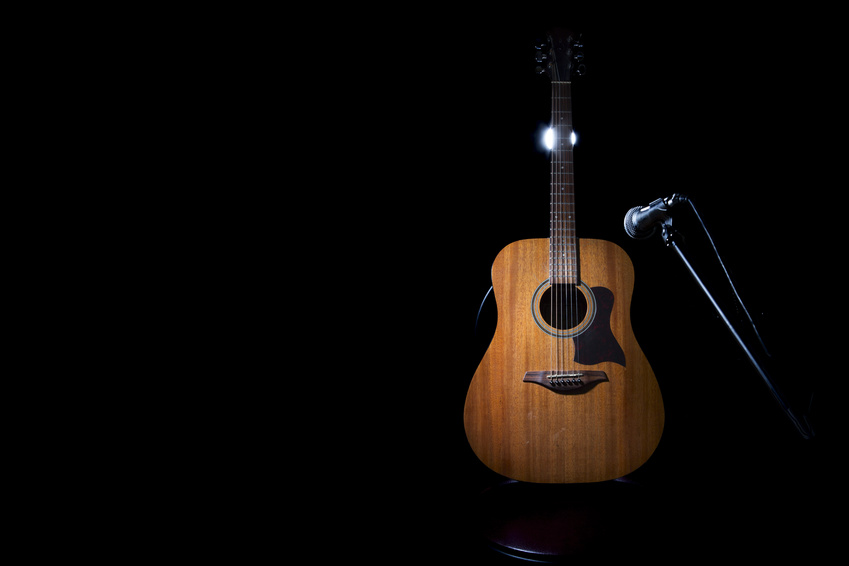
This is where most people start and there are a large number of options. There are two main types of acoustic guitar. The steel-string guitar is known for its authentic metallic sound that has defined so many genres of popular music and as its name suggests the strings on this guitar are made of steel, unlike the classical acoustic guitar that uses nylon strings. The neck of the classical guitar is wider than the one on the steel-string guitars. There are a lot of entry level acoustic guitar models that are perfect for beginners who’d like to learn to play the instrument.
Electric Guitars
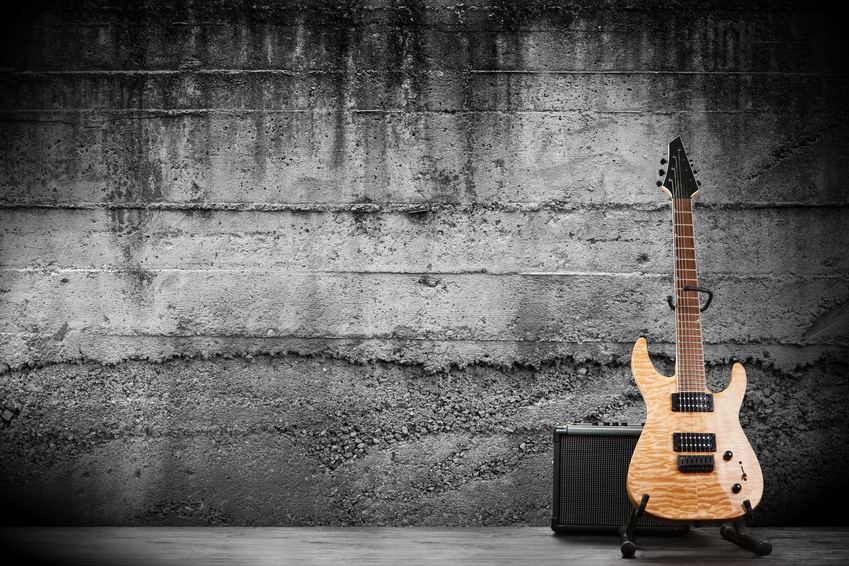
Electric guitars became popular in the second half of the 20th century and for more than fifty years they’ve defined the sound of popular music. They are designed to be plugged into an amplifier and produce a distinctive sound that is quite different from the acoustic guitar. The strings on an electric guitar are closer to the neck, which is why it takes less force to press them down and therefore, it is easier to play but it is probably better to learn how to play acoustic guitar before picking up an electric one.
Electro-Acoustic
This is basically an acoustic guitar that has been fitted with magnetic pickups and sound chambers that allow the sound to be amplified. They are often used when an acoustic sound is desired, but the volume of an acoustic guitar is not sufficient. Electro-acoustic guitars are easy to play and can be an excellent choice for someone who is just starting out as a guitar player.
Can you teach yourself guitar?
Yes, you can.
While having an instructor can definitely be beneficial it is far from being a prerequisite for learning how to play. For some people, an instructor is not the right solution because guitar lessons are expensive.
In any case, you need to do most of the work by yourself, which is why an instructor can’t guarantee that you’ll learn how to play so if you are motivated enough you can easily become a decent self-taught guitarist you just need to make sure you keep pushing yourself to practice as much as possible.

If you want to learn how to play all by yourself, the most important thing is to do it properly, it is awesome if you can play a few popular tunes but there is much more to playing guitar than just picking up a few chords. The much better path is to start from major and minor scales, chords, note patterns and guitar theory and slowly work your way up. After mastering these concepts you’ll pick up new songs effortlessly.
Having a group of friends with whom you can practice might be a good idea. First of all, you will have someone to show your progress to which can be a strong motivation to keep practicing. If you choose to learn by yourself, you can organize your daily routine so the guitar lessons fit into your schedule.
Learning to play guitar can be a lot of fun and having a few friends that share your passion for music can facilitate the learning process. You should enjoy every second you spend playing and soon enough you’ll find people with whom you can jam and exchange ideas. The best way to learn to play guitar is just to play, other people will help you by sharing tips that will assist you in improving your skills.
How to learn guitar online?
Learning to play any instrument thirty of fifty years ago was much more difficult because people couldn’t find the necessary information so easily. Today you can find out anything you want in a few minutes all you need to do is to find the right sources on the Internet.
Watch tutorials
The best starting point is to find online tutorials that you like. There are thousands of videos that explain the basic and advanced guitar playing techniques, however, YouTube videos can be confusing for someone who is just starting. Using websites like GuitarTricks or GuitarCompass that offer hundreds of free lessons to users is a better approach because you’ll be able to monitor your own progress. If you ever feel the need, you can get in touch with professional guitar players through these websites who can answer any questions you might have.
Here’s a good lesson to start with from GuitarJamz.com:
Computer software like Guitar-Pro is a useful tool that gives you access to thousands of guitar tabs and music scores and it also features a metronome and other tools that can assist you in developing your guitar playing skills faster.
If you don’t want to use computer software, you can visit websites such as OnlineMusicSheets.com or 8Notes.com where you can download guitar music sheets for free. All sheets are available in PDF files and can be printed, which is why you don’t have to worry about having your computer with you every time you’d like to practice.
Read as much as you can
Guitar playing requires some knowledge and understanding of the instrument. The theoretical knowledge will not necessarily make you a better player, but it will allow you to grasp what you are doing while playing or practicing.
Using the Internet as a research tool to gather as much information about guitar playing as you can is an excellent way to work on your skills when you are not practicing. If you know what scales or chords are, then it is just a matter of time when you will become a master of power chords or complicated blues solos. You can start learning about music theory of guitar by following this link, where you can find all the essential theoretical concepts.
Find an online community of guitar players
The World Wide Web is an amazing place where you can find out what some of the leading guitarists in the world have to say about the process of learning to play guitar. It is a dream come true for any beginner in need of instructions or encouragement.
Finding an online community of guitar players will enable you to get in touch with people who wish to help others become great guitar players and it will serve as a place where you can discuss questions you find important.
You can start by visiting:
- Harmony Central, one of the oldest guitar forums on the Internet or
- TheGearPage where you can find out everything you need to know about the best guitar equipment your money can buy.
How long does it take to learn guitar well
Learning to play an instrument is a never-ending process and trying to set a time limit to it can only be counterproductive. How fast you learn is related to how much you practice, the more you practice the faster you learn.
After three to six months you should be able to play easy songs and some of the basic lead guitar techniques, but at this stage, learning new songs takes time and a lot of practice. By the end of the first year, you would be able to play a lot of famous songs, however at this stage, you’ll hardly be able to call yourself an advanced player.
During the second and third year, most people start to feel more comfortable with the instrument and arrive at the level of skill that enables them to improvise and learn new songs quickly. Yet, at this stage, you will probably have a lot more work to do and you’ll start to realize how much more you need to learn.
If you manage to work on your skills for 5 or more years you’ll be able to play whatever you want. Around this time most people, who know their music theory, start to compose their own music.
The anatomy of a guitar
Each new guitar player needs to familiarize herself or himself with all the parts of a guitar before she or he can start playing. Most guitars consist of the same parts, some may have some additional elements but the basic parts are always the same.
Each guitar has the body, the neck, and the headstock. The body is the largest part of the instrument that provides the resonance that forms the tonal qualities. It also determines the volume of acoustic guitars.
The neck consists of a fingerboard that has frets, small metal bars that tell the player where to press the string to get a certain tone and the headstock. The headstock is located at the top of the guitar and it contains tuners or tuning pegs that are used for tuning the guitar. They also hold the strings in place. The part located on the body of a guitar that holds the strings on the lower end is called a saddle.
The strings on a guitar explained
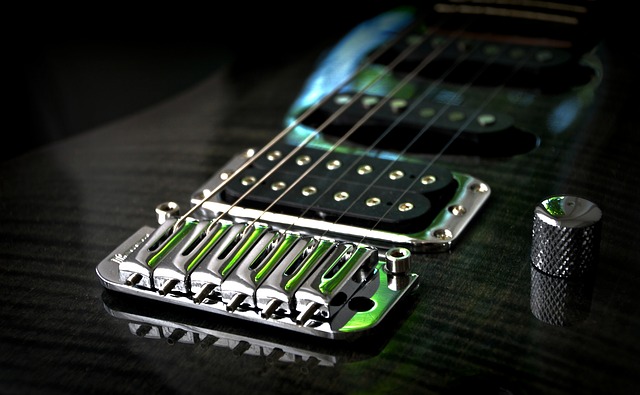
A guitar string is a vibrating element that produces sound. It is also considered a part of a guitar.
They are produced from flexible materials that can withstand the tension produced by strumming. Most guitars have either nylon or steel strings and most guitars, with the exception of bass guitars and twelve string guitars, have six strings.
The thinnest string is the first string and thickest one is the sixth. The name of the sixth string is E, the fifth is A, fourth is D, third is G, second is B and the first one is again E. Knowing the names of the strings by heart is very important because you’ll need them to learn the guitar chords or scales or anything else related to playing guitar.
The quality of the strings you use will determine how your guitar is going to sound like, which is why it is important to use the strings that are best suited for the guitar you have. You can find valuable advice on which electric guitar strings to look for here.
How to tune a guitar
Before starting to play you first need to tune your guitar because if you fail to do so, your playing will sound awful regardless of how good a guitar player you are. There are two ways to tune a guitar.
You can either do it by ear, which requires some previous knowledge and a lot of practice or you can get an electronic guitar tuner that will probably make your life much easier.
Electronic guitar tuners are not very expensive or you can also find tuning apps online or you can visit Fender.com or Tunerr.com and tune your guitar there.
To learn how to properly tune a guitar you first need to understand the concept of a flat or a sharp note. A flat note is below its true pitch, while a sharp note is above its true tone. If you are using an electric tuner, make sure that you set it to 440Hz, because this is the standard frequency guitars are tuned to. You’ll also need a starting point, a note you are tuning your guitar to. Then simply move turning pegs to increase or decrease tension on the strings.
You can also find video tutorials:
How to hold the guitar properly
Proper guitar posture might not have an immediate impact on your playing and many guitar players pay little attention to it but holding the guitar in the right way as well as sitting properly can be quite useful.
The best practicing position is a sitting position. Most of us dream about walking across the stage while playing a vicious solo but before that becomes more than a dream you need to find a comfortable chair that doesn’t have an armrest or anything else that might be an obstacle to your hands moving freely.
Balance the guitar by placing it firmly on your right thigh, then place your right foot flat on the floor and put the right leg slightly forward (if you are left-handed do it the opposite way round). Strive to keep your back as straight as possible. Avoid sitting on the couch while practicing, because bad posture can slow down the learning process.
Most guitar players are right-handed and most guitars are for right-handed people. Your right hand is your strumming hand and your left arm is your fretting hand. The strumming hand is used for producing sound, while the left one is used to press the strings down and produce notes. Hold your guitar angled up, this will allow you to have easier access to the fingerboard.
At first, holding a guitar properly may not seem important, but through time it may prevent back, shoulder, neck and wrist pains and it will allow you to play more effectively.
How to read tabs
You don’t have to know how to read music to be able to read guitar tabs. However, there are three basic numbering systems that all guitar play must learn if they want to know how to read tabs. Frets are the metal strips on the neck of the guitar, the one closest to the headstock is the first one, the one after is the second, and so on.
The second numbering system refers to fingers. Your index finger is the first finger and your pinky is number four, pretty simple, right? Yet, very important when you start to learn the position of the fingers to make chords. The final numbering system is for strings and it is also very simple with the thinnest string number one and the thickest is number 6.
Read all tabs as if you are reading sentences, from left to right and from the top down. If you see three numbers one above another you are looking at a chord. Be mindful of chord changes since most songs consist solely of chords and simply play them in order in which they are listed. Don’t forget to have fun.
There are 2 main types of guitar Chords, the major and minor chords which can be seen here in tab form:
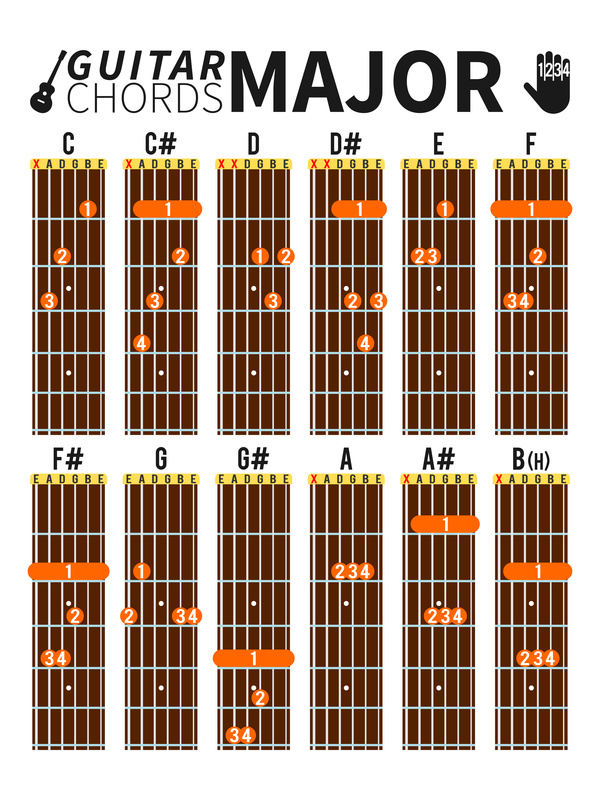
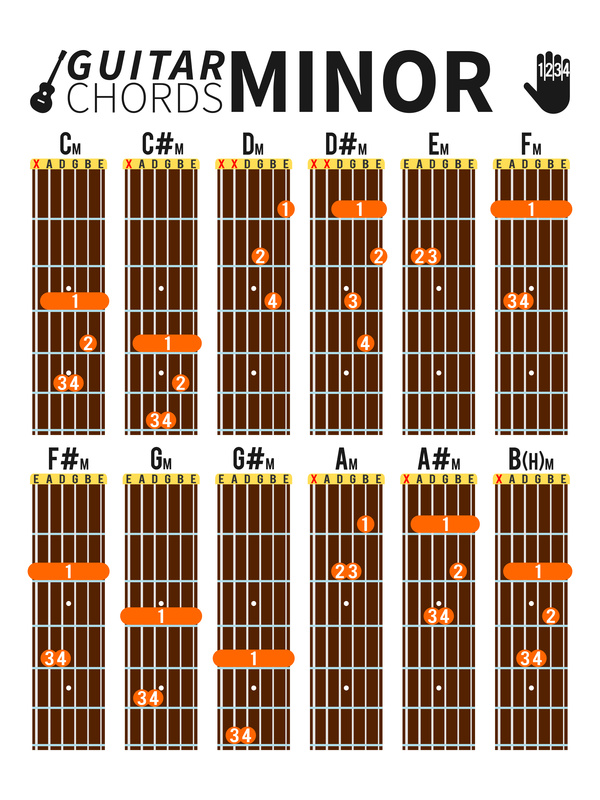
How to learn guitar chords
A guitar chord is a set of notes that are often played at the same time, although sometimes they can be played separately and before you become a lead guitar player who can lay out breath-taking solos and melodies, you need to master the chords and the rhythm guitar. There are over 2000 chords that can be played on a six string guitar but in reality you can play hundreds of songs by just learning the most well-known chords.
The basic and the single most important chord on guitar is the C chord and it is the starting point for learning all other chords. When you grow more comfortable with C and C Major chords you can add more basic chords like G, F, and F Major to your musical vocabulary. Once you get the order of fingers right, you can start combining the chords you learned and practicing how to go from one to another as fast as you can.
Learning chords takes time and practice which is why it is essential to be patient and work continuously on learning more chords. It isn’t enough to know where to put your fingers, you must be able to do it fast, otherwise, you’ll just fall out of rhythm or stop to look are your fingers positioned correctly. If you are persistent enough, you’ll learn guitar chords in a short period of time, which will allow you to play your favorite tunes.
Further reading:
Guitar for Dummies – PDF book
Music Theory is Not Nuclear Physics – PDF book


 How to Write Poetry For Beginners: Easy if You Know How
How to Write Poetry For Beginners: Easy if You Know How The Best Acoustic Guitars in the World
The Best Acoustic Guitars in the World 9 Super Creative Street Art Pieces
9 Super Creative Street Art Pieces The 10 Greatest TV Shows of All Time
The 10 Greatest TV Shows of All Time How to Play Guitar for Beginners
How to Play Guitar for Beginners